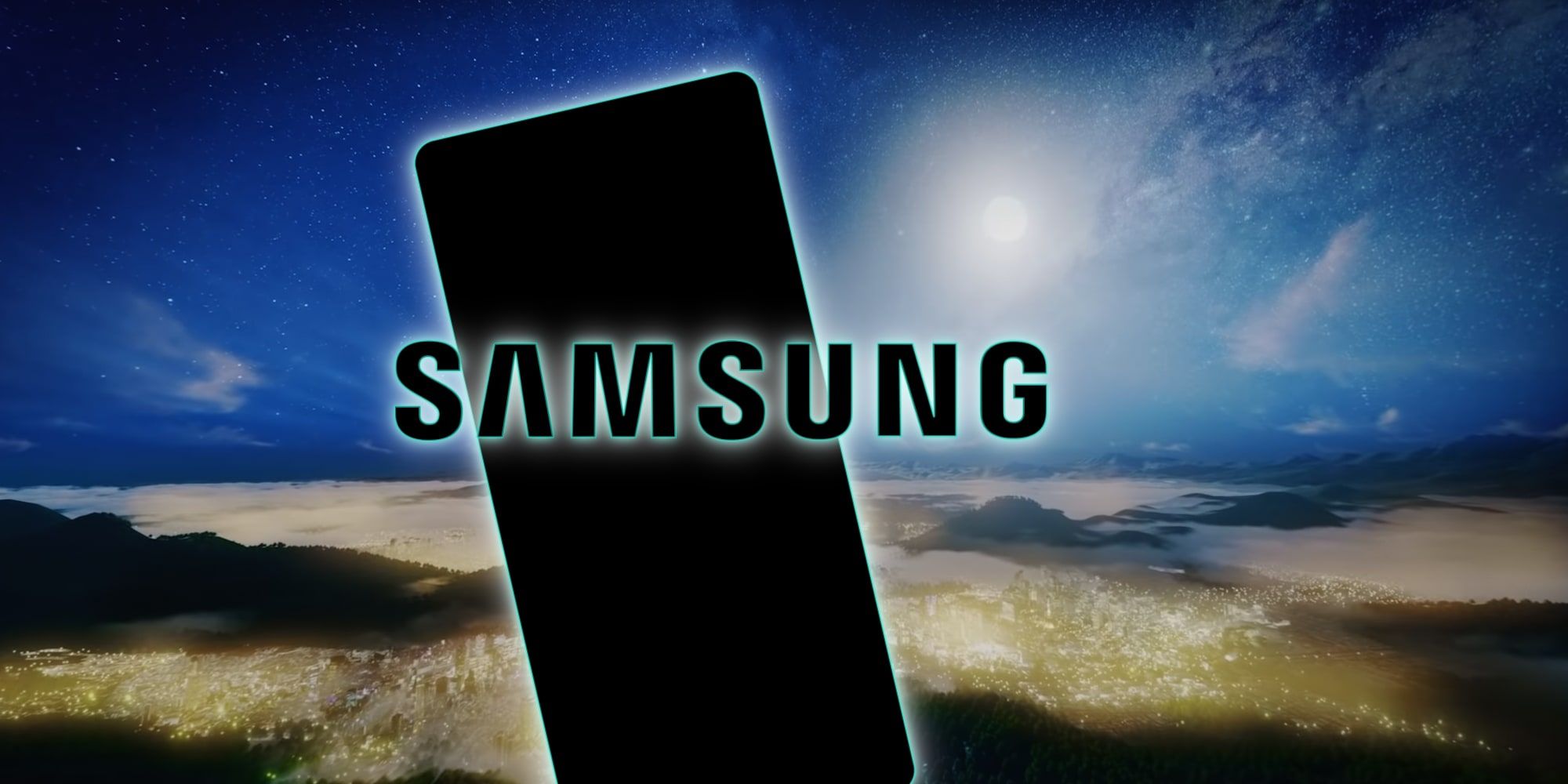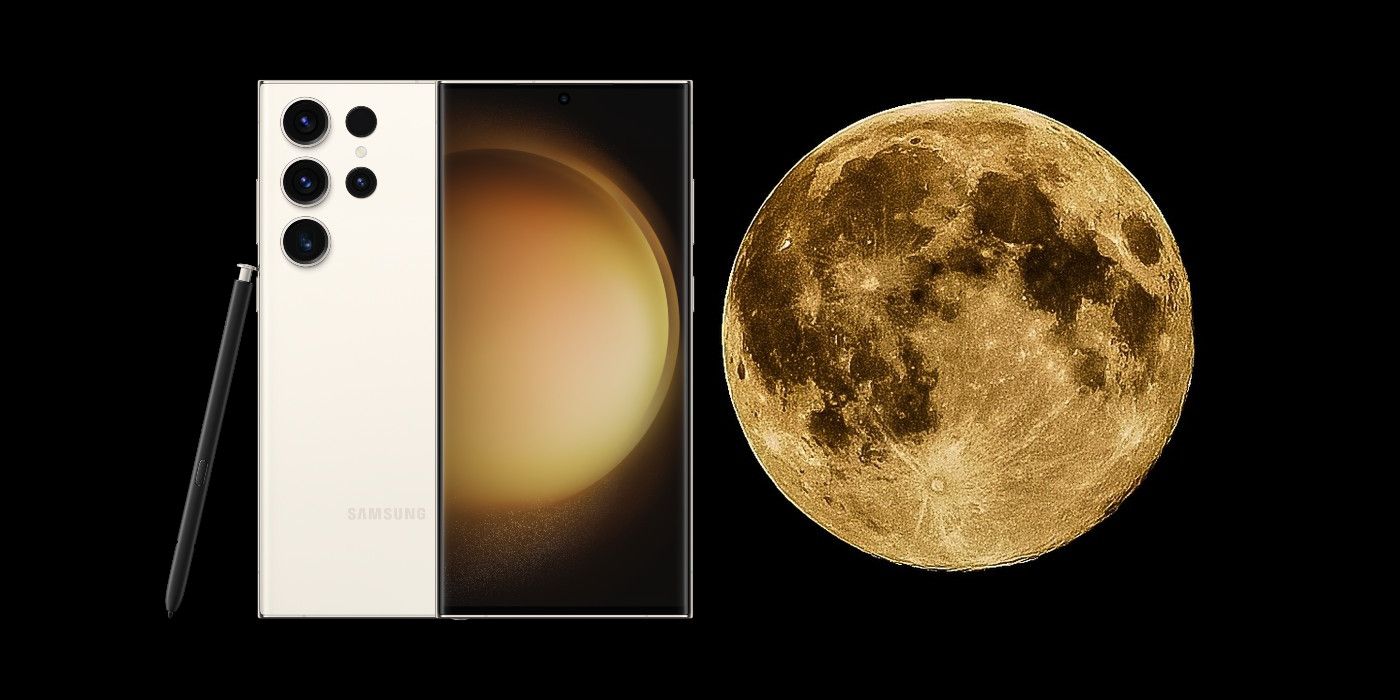Taking a picture of the moon with a Samsung Galaxy phone has never been easier, and can be accomplished using a combination of Night Mode, Pro Mode, and a way to stabilize the phone during the picture, such as a tripod. Phone cameras are impressive feats of engineering and technology. They can produce some of the best pictures imaginable with a combination of image processing and software controls, and low-light photography has gotten significantly better as well.
In order to take a good picture of the moon with a Samsung Galaxy phone, there are a few steps to follow. First, place Night Mode and Pro Mode on the main camera screen by navigating to the ‘More‘ tab in the camera app and dragging the ‘Pro’ and ‘Night‘ icons to the bottom panel. This will let users have quick access to both modes while taking a picture. Next, find a way to stabilize the phone. Using a tripod is ideal, but as long as the phone is propped up and stable during the shot, it should provide a good result. Next, set a low shutter speed in Pro Mode to allow more light capture from the camera sensor and set an ISO value of 400 or above for better clarity. Once the settings are dialed in, point the camera at the moon and take a picture.
Pro Mode Vs. Night Mode Vs. Space Zoom

If taking a photo of the moon, Pro Mode is the best way to go about this, as it gives more nuanced control of how the image will be taken, unlike Night Mode which does everything automatically. When taking a night picture by hand (and if there isn’t much stabilization), Night Mode is probably the better option. But, if taking a picture of a subject like the moon with a tripod, Pro Mode will give more control and a better end result.
Stabilization is important for taking pictures at night because the shutter speed is lowered to take in more light. Without stabilization, even minor movements can end up causing a blurry image. For users who have the Galaxy S22 Ultra or Galaxy S23 Ultra, the 100x Space Zoom feature can be used to take a stunning close-up shot of the moon. To use the feature, stabilize the phone, point it at the moon, and zoom in slowly until the moon is in the frame. Tap the screen to adjust the exposure, and capture the image.
Overall, taking night photos can be as simple as turning on Night Mode for a quick shot without the need to mess with too many settings, or delving into Pro Mode to gain more control and potentially get the best picture possible. Whichever the mode used, investing in a good tripod will make pictures of the moon or any low-light scene clearer, more vibrant, and less blurry. Technology has come a long way in the past few years, and many don’t even find the need to use a dedicated camera anymore due to how impressive smartphone cameras have become. The best pictures will always require patience and determination though, so be sure to take time getting used to Samsung’s camera modes and settings.
Are The Galaxy S23 Ultra’s Moon Shots Fake?

The Galaxy S23 Ultra has been the subject of controversy after a Reddit user ran an experiment showing how the phone adds artificial details to photos of the moon. The Redditor downloaded a high-resolution image of the moon from the internet, intentionally blurred it, and displayed it on a computer monitor. He then darkened the room and photographed that image using the S23 Ultra. The resulting photo was a detailed image of the moon, displaying even its craters.
Naturally, people have been wondering if Samsung is just applying an overlaid image of the moon using AI – something Huawei was accused of doing with the P30 Pro back in 2019. According to Samsung, the moon shots aren’t fake. Instead, the company claims that when the camera detects the moon in an image, the AI Scene Optimization captures multiple shots and enhances details. It’s a bit of a gray area – on one hand, Samsung isn’t overlaying an image of the moon on photos, but on the other, it is using a fair bit of post-processing to add details that weren’t captured in the first place.
It’s worth mentioning that no smartphone can capture a moon photo as accurately as a DSLR, just because they don’t have the necessary hardware to zoom long distances. Digital zoom can’t replicate optical zoom, which is why smartphones artificially enhance photos. Whether we like it or not, AI in photography is here to stay, from realistic filters for selfies to photos of the moon captured by Samsung Galaxy Ultra phones.




